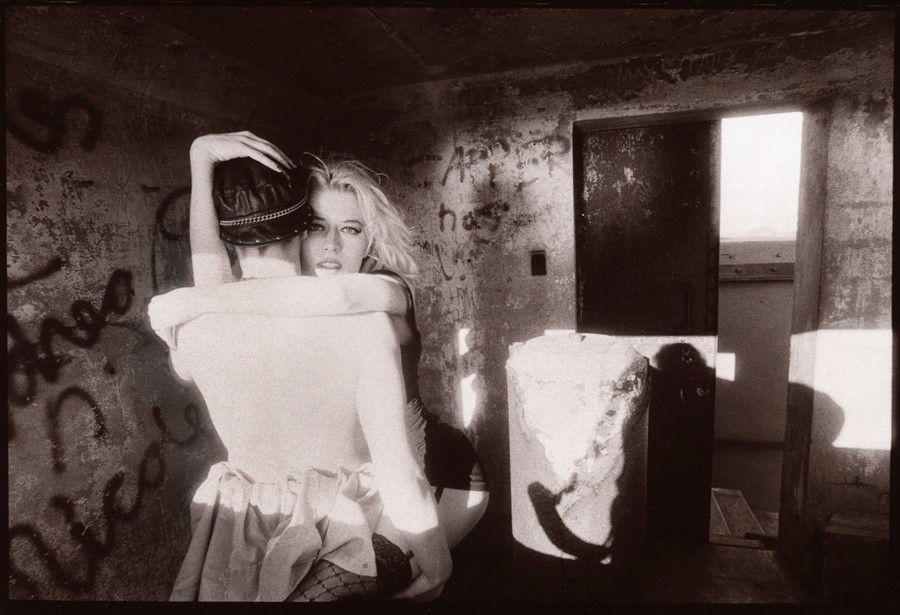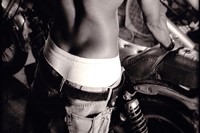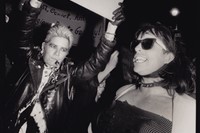Phyllis Christopher’s photographs offer an intimate look at the city’s queer community, documenting their fight for sexual, artistic and political freedom
When Phyllis Christopher picked up her camera in the late 1980s and started photographing her queer community in San Francisco, it was a radical act of documentation. During a time of censorship, extreme homophobia, and right-wing political domination – when the Aids crisis was reaching its height – queer sex positivity and lesbian visibility were virtually nonexistent.
Longing for authentic representation of herself and her community, and sensing the importance of capturing the growing number of people taking to the streets in protest, Christopher joined the handful of photographers who were creating the lesbian visibility they needed to see for themselves.
“It felt like I was taking pictures for the first time, which as a photographer is really exciting,” says Christopher over the phone from Gateshead, England, where she has been living on and off for the past 15 years. “I remember the first time I took a picture of my first girlfriend in the 80s. I got a shiver up my spine because I felt like there needed to be these images out there. And that feeling has stayed with me.”
The historic absence of mainstream representations of lesbian life became the “predominant thrust” behind Christopher’s work. Through her fearless, intimate and tender lens, she bore witness to her community as they fought for sexual, artistic and political freedom, capturing the everyday moments of protest, desire and joy. At a time when there was so much fear and misinformation surrounding queer sex, her gaze was unblinking.
“The Aids epidemic definitely informed the work,” she says. “Some of my work is very graphic and it’s because we needed to talk about sex because people were dying and we didn't know why. We needed to be very open about sex and very articulate about it.”
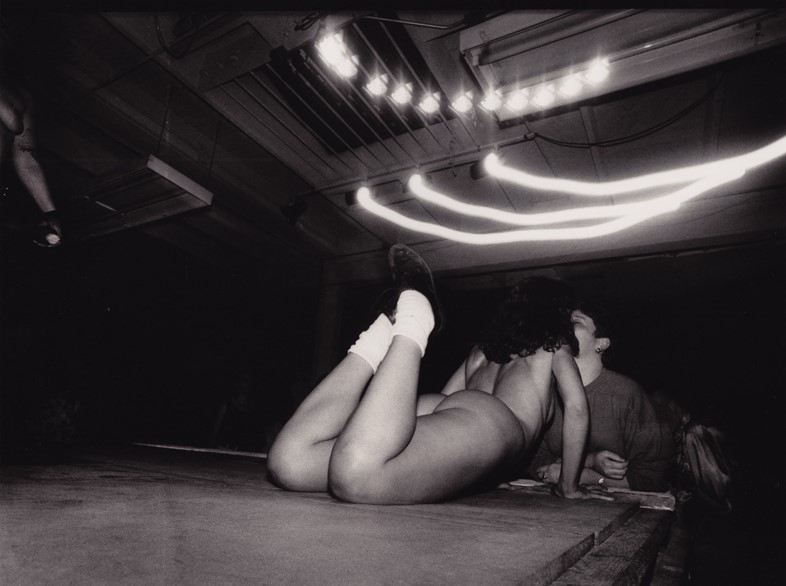
The work Christopher created during this time – much of it published by lesbian erotic magazine On Our Backs, where she became photo editor in 1991 – explored authentically lesbian desires, fetishes and gender identities. The images are sexy, playful, and, most vitally, honest. “People often say, ‘how did you get women to have sex for the camera?’ And it’s like, women were desperate to do it, because there were no images out there,” she says. “We wanted to communicate to each other what we were doing and how fun it was.”
Over three decades after Christopher started photographing, her work is getting the mainstream recognition it deserves. Her first major retrospective, Contacts, opened at the BALTIC Centre for Contemporary Art in Gateshead last month, and it coincides with a solo exhibition at Grand Union in Birmingham. Her first book, Dark Room: San Francisco Sex and Protest, 1988-2003 is also being published early next year. It’s a huge moment after years of struggling to find printers willing to reproduce the images, being stopped at borders, and being told by publishers that photographs of women having sex were frivolous.
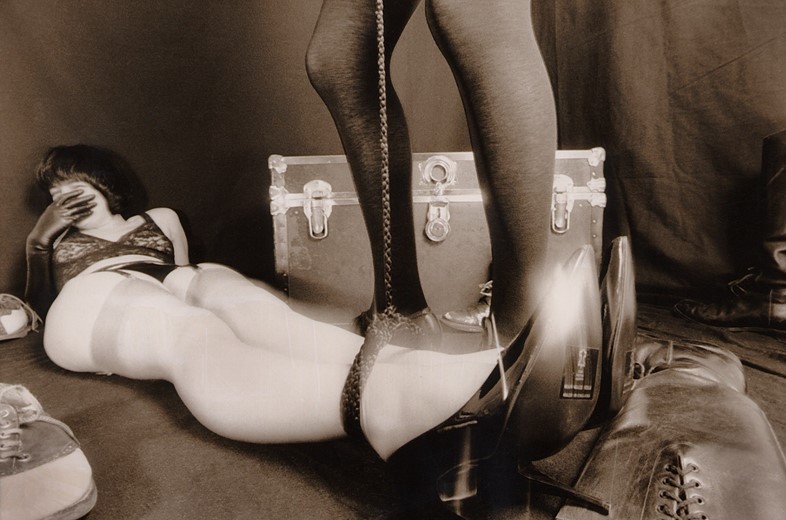
The opening of the Baltic exhibition, Christopher says, was emotional and the reaction from the community has shown her that 30 years after starting her mission to make the invisible visible, there is still work to be done. “Even though the images are from California in the 90s, the queer community here felt really empowered by them. The images speak to them, that’s what people have been telling me,” she says.
“The room at the Baltic is a tribute to lesbian visibility, and diversity in bodies, and eroticising the butch body in particular. I think the community still needs to see really empowering images like that.”
Contacts is running at the BALTIC Centre for Contemporary Art in Gateshead until March 20, 2022.
